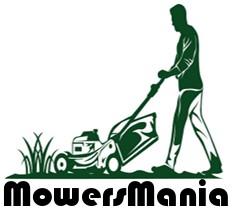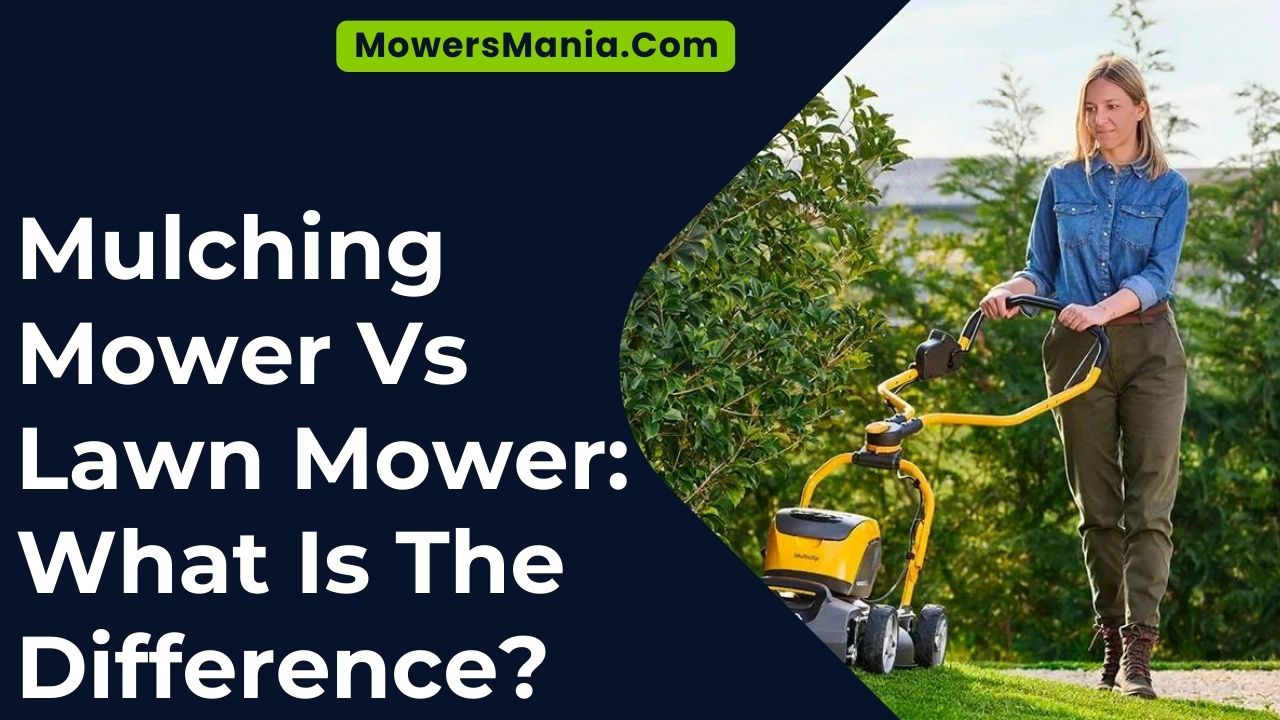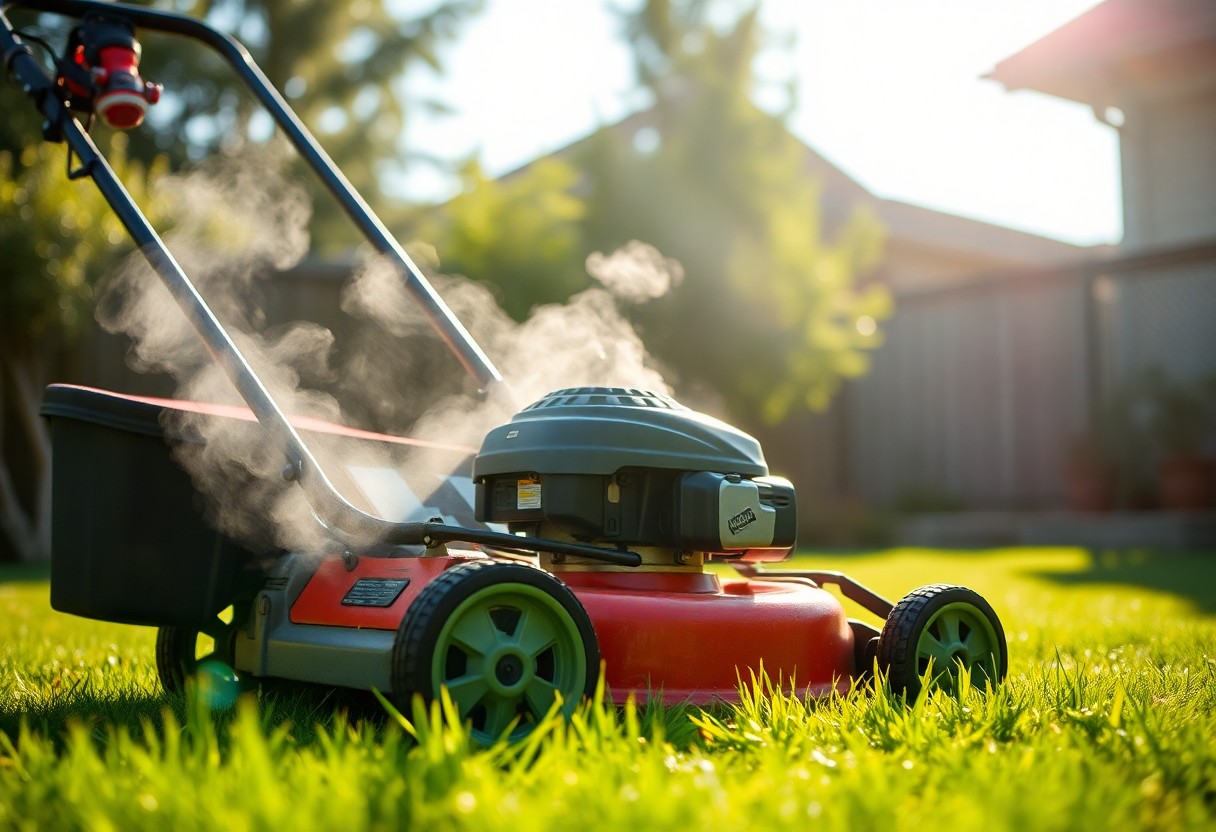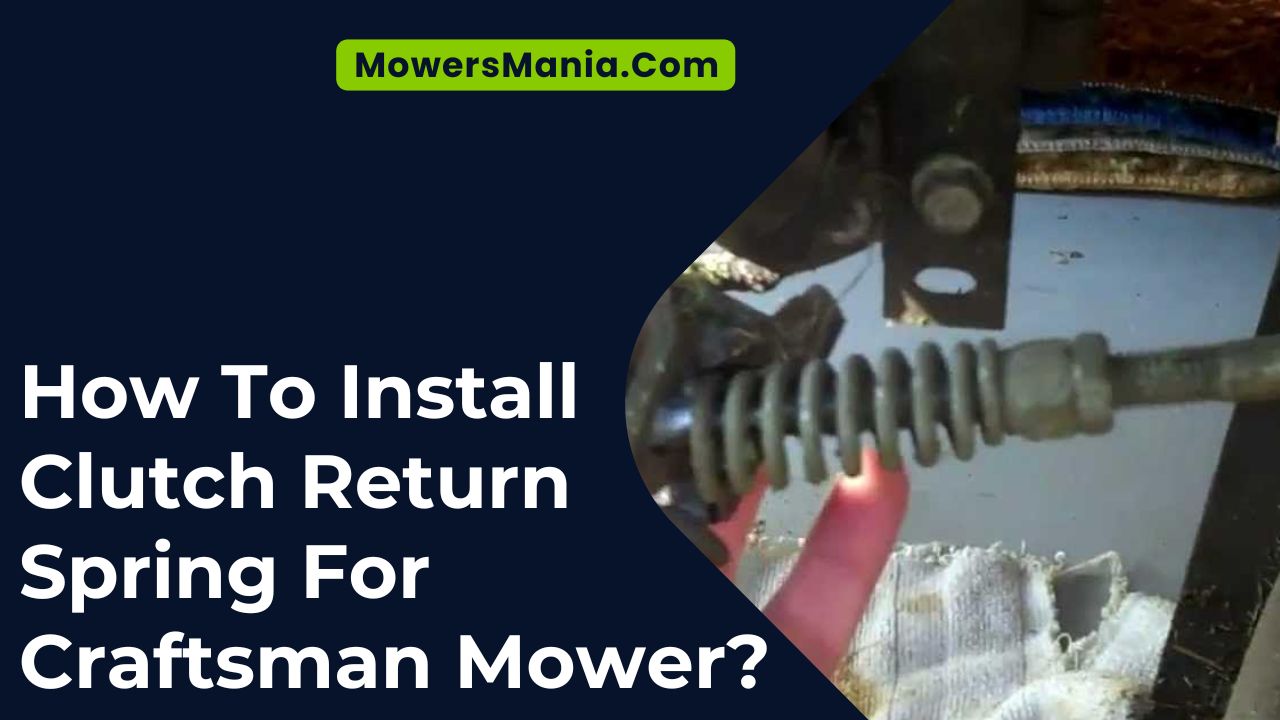If you’re wondering about the difference between a mulching mower and a traditional lawn mower, you’ve come to the right place.
Mulching mowers and lawn mowers serve distinct purposes, and understanding their varied cutting mechanisms, treatment of grass clippings, maintenance requirements, and environmental impact can help you make an informed choice for your lawn care needs.
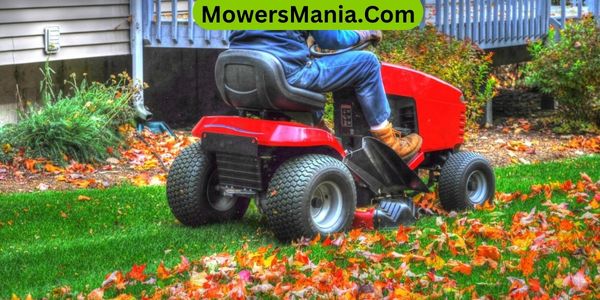
Let’s dive in and explore the differences between these two essential tools for keeping your lawn in top shape.
Mulching Mower Vs. Lawn Mower: What’s the Varied Purpose?
When choosing between a mulching mower and a traditional lawn mower, you’ll want to understand the varied purposes each serves in maintaining your lawn.
A mulching mower is designed to finely chop grass clippings and deposit them back onto the lawn, where they decompose and act as a natural fertilizer.
This not only saves you the hassle of collecting and disposing of clippings but also nourishes your lawn, promoting healthier and greener grass.
On the other hand, a traditional lawn mower typically comes with a bag attached to collect the grass clippings, leaving behind a clean and manicured lawn.
The varied purpose of a mulching mower lies in its ability to improve the health of your lawn by recycling the clippings, whereas a traditional mower focuses on achieving a tidy and pristine appearance.
Understanding the differences in purpose can help you make an informed decision based on your lawn maintenance priorities.
Whether you prioritize convenience and lawn health or a well-groomed appearance, choosing the right mower for your needs will ensure your lawn stays in top condition.
Cutting Mechanism: How Do They Difference?
To understand the difference in cutting mechanism between a mulching mower and a traditional lawn mower, you’ll notice that the mulching mower uses a specially designed blade to finely chop grass clippings and redistribute them onto the lawn, while a traditional mower typically cuts the grass and collects the clippings in a bag attached to the mower.
The mulching mower’s blade is designed to cut the grass into very fine pieces, almost like mulch, before dispersing it back onto the lawn. This process, known as ‘grasscycling,’ allows the clippings to decompose quickly, providing nutrients to the soil and promoting a healthier lawn.
In contrast, a traditional lawn mower cuts the grass and gathers the clippings in a bag, which then needs to be emptied or disposed of.
The mulching mower’s cutting mechanism not only saves time by eliminating the need to stop and empty a clippings bag but also contributes to the overall health of the lawn. On the other hand, traditional mowers require additional steps for handling the collected clippings, such as composting or disposing of them.
Grass Clippings: Treatment and Dispersal Variation
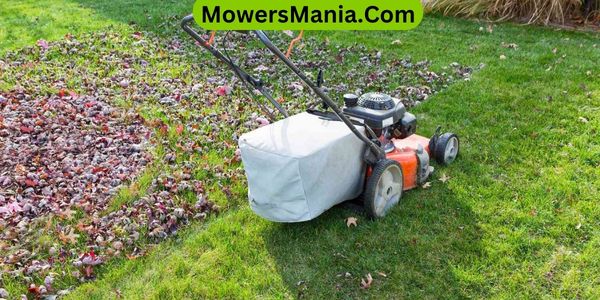
The treatment and dispersal of grass clippings difference significantly between a mulching mower and a traditional lawn mower.
When using a mulching mower, the grass clippings are finely cut into small pieces and then redistributed back onto the lawn.
These tiny clippings decompose quickly, providing valuable nutrients and moisture to the soil, which promotes a healthier lawn. This process is known as ‘grasscycling,’ and it can help reduce the need for additional fertilizers.
On the other hand, a traditional lawn mower collects the grass clippings in a separate bag or box, which must then be emptied and disposed of. This method of collecting and removing clippings can be more time-consuming and labor-intensive.
However, some traditional mowers offer the option to attach a bag for collection or to discharge the clippings from the side or rear of the mower.
Discharged clippings can be left on the lawn as a natural mulch, but they may not break down as quickly or provide the same level of nutrient return as those from a mulching mower.
Understanding the treatment and dispersal variations between these mowers can help you make an informed choice based on your lawn care needs.
Maintenance Requirements: Contrasting Features
As you shift your focus to the maintenance requirements of mulching mowers and traditional lawn mowers, you’ll notice contrasting features that impact their upkeep.
Mulching mowers generally require less maintenance compared to traditional lawn mowers. One key difference is that mulching mowers don’t require the regular changing of a collection bag or the disposal of grass clippings, as they’re finely cut and redistributed into the lawn. This eliminates the need for bag cleaning and disposal, saving you time and effort.
Additionally, mulching mowers have specially designed blades that are meant to finely chop the grass, which reduces the need for blade sharpening compared to traditional mowers.
However, it’s important to regularly clean the underside of a mulching mower’s deck to prevent buildup and ensure optimal performance.
On the other hand, traditional lawn mowers require more frequent maintenance tasks such as changing or emptying the collection bag, disposing of grass clippings, and regular blade sharpening to maintain cutting efficiency.
Understanding these contrasting maintenance features can help you choose the mower that best fits your needs and maintenance preferences.
Environmental Impact: Understanding the Differences
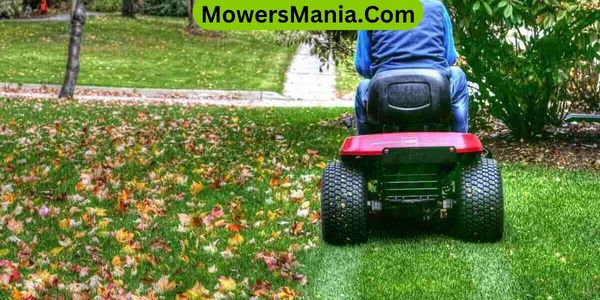
When considering the environmental impact, mulching mowers and traditional lawn mowers differ in their handling of grass clippings.
Mulching mowers are designed to finely chop grass clippings and redistribute them back onto the lawn, acting as a natural fertilizer. This process helps to reduce waste, conserve water, and promote a healthier lawn.
On the other hand, traditional lawn mowers collect the grass clippings in a bag, which are then often disposed of in landfills, contributing to environmental pollution. The table below illustrates the environmental impact of both types of mowers.
| Environmental Impact | Mulching Mower | Traditional Lawn Mower |
|---|---|---|
| Grass Clippings | Recycled as natural fertilizer | Often disposed in landfills |
| Water Conservation | Helps conserve water by returning moisture to the soil | No impact on water conservation |
| Waste Reduction | Reduces waste by recycling clippings | Contributes to waste in landfills |
| Air Pollution | Lowers emissions by not needing to collect and dispose of clippings | May release emissions when disposing of clippings |
| Overall Impact | Positive impact on the environment | Negative impact on the environment |
Considering these impacts, choosing a mulching mower can be an environmentally conscious decision, contributing to sustainable lawn care practices.
Frequently Asked Questions [FAQs]
Can a Mulching Mower Be Used on All Types of Grass, or Are There Specific Types It Works Best For?
Yes, you can use a mulching mower on all types of grass, but it works best on fine grasses like Bermuda, Kentucky bluegrass, and fescues. It effectively cuts and mulches the grass, promoting a healthier lawn.
Are Mulching Mowers More Expensive to Maintain Than Regular Lawn Mowers?
Mulching mowers aren’t necessarily more expensive to maintain than regular lawn mowers. Both require routine maintenance like oil changes and blade sharpening. The cost difference lies in potential additional blade replacements for mulching mowers.
Can a Regular Lawn Mower Be Converted Into a Mulching Mower, or Do You Need to Purchase a Separate Machine?
You can convert a regular lawn mower into a mulching mower by installing a mulching kit. It’s an affordable way to upgrade your mower. The kit typically includes a mulching blade and a plug for the discharge chute.
Do Mulching Mowers Require a Different Type of Blade or Maintenance Schedule Compared to Regular Lawn Mowers?
Yes, mulching mowers do require a different type of blade and maintenance schedule compared to regular lawn mowers. They have specially designed blades and need more frequent maintenance to ensure optimal mulching performance.
Are There Any Safety Concerns or Precautions Specific to Using a Mulching Mower Compared to a Regular Lawn Mower?
When using a mulching mower, be mindful of the discharge chute and keep it pointed away from people or pets. Also, ensure the mower is completely turned off before attempting to clear any blockages to prevent accidents.
Conclusion
In conclusion, the difference between a mulching mower and a lawn mower lies in their varied purpose, cutting mechanism, treatment and dispersal of grass clippings, maintenance requirements, and environmental impact.
Understanding these differences can help you choose the right mower for your lawn care needs. Whether you prioritize convenience, environmental friendliness, or a well-manicured lawn, the choice between a mulching mower and a traditional lawn mower can make a significant difference in the health and appearance of your lawn.
